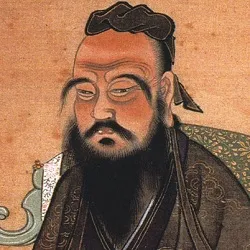- RESEARCHDistance Learning at AIU is enhanced by vast academic resources and innovative technologies build into the Virtual Campus: Hundreds of self-paced courses with video lectures and step by step lessons, thousands of optional assignments, 140,000 e-books, the Social Media & Networking platform allowing collaboration/chat/communications between students, and MYAIU develop students holistically in 11 areas beyond just academics.
- PROGRAMS OFFERED
- Areas of Study
- Courses and Curriculum
- Open Courses
- Register for a Program
- Associate Program
- Associate in Addiction Counseling
- Associate in Agriculture Food And Resources
- Associate in Anti Terrorism Security
- Associate in Behavior Analysis In Special Education
- Associate in Bioethics
- Associate in Climatology
- Associate in Cultural Theological Communication
- Associate in Culinary Arts
- Associate in Ecotechnology
- View all Associates Programs
- Bachelor Program
- Bachelors in Community Development
- Bachelors in Environmental Science
- Bachelor in Education (B.Ed, BS)
- Bachelors in Economics
- Bachelors in Entrepreneurship
- Bachelors in Financial Administration
- Bachelors in Human Resource Management
- Bachelors in Linguistics
- Bachelors in Nutritional Science
- Bachelors in Occupational Health and Safety
- Bachelors in Psychology
- View all Bachelor Programs
- Doctorate Program
- Doctor | of Biology (PhD)
- Doctorate in Business Administration (DBA, PhD)
- Doctor of Economics (PhD)
- Doctor of Electrical Engineering (D.Sc, PhD)
- Doctor of Finance (PhD)
- Doctorate in International Relations
- Doctorate in Information Technology (D.Sc)
- Doctor of Legal Studies (PhD)
- Doctor of Project Management (PhD)
- Doctor of Sociology (PhD, D.Sc)
- Doctorate in Sustainable Natural Resources Management
- View all Doctorate Programs
- Master Program
- Postdoctoral Program
- Postdoctoral in Animal Science
- Postdoctoral in Anti Terrorism Security
- Postdoctoral in Behavior Analysis In Special Education
- Postdoctoral in Bioethics
- Postdoctoral in Blockchain Technology and Digital Currency
- Postdoctoral in Business Management
- Postdoctoral in Cloud Computing
- Postdoctoral in Computer Engineering
- View all Postdoctoral Programs
AIU offers a wide range of majors in areas including the Arts, Business, Science, Technology, Social, and Human studies. More than 120 degrees and programs are available for adult learners at the associate’s, bachelor’s, master’s, doctoral and postdoctoral level. - VIRTUAL CAMPUS
Distance Learning at AIU is enhanced by vast academic resources and innovative technologies build into the Virtual Campus: Hundreds of self-paced courses with video lectures and step by step lessons, thousands of optional assignments, 140,000 e-books, the Social Media & Networking platform allowing collaboration/chat/communications between students, and MYAIU develop students holistically in 11 areas beyond just academics.
- ALUMNI
The world is YOUR campus!”, that is the message of AIU’s month magazine Campus Mundi. Hear the voices and see the faces that make up AIU. Campus Mundi brings the world of AIU to you every months with inspirational stories, news and achievements by AIU members from around the world (students and staff are located in over 200 countries).
Nanotechnology in Drug Delivery and Disease Treatment

Do you know how nanoparticles specifically target cancer cells while leaving healthy cells unharmed?
What makes nanoparticles more effective in drug delivery compared to traditional methods?
What role do pH-sensitive and temperature-sensitive materials play in controlled drug release?
Write a comprehensive essay using your research skills on how nanotechnology is revolutionizing medicine by improving the effectiveness and reducing the side effects of drug delivery and disease treatment. The essay should discuss the use of nanoparticles for targeted, controlled drug release, and highlight its benefits for treating cancer, cardiovascular, and neurological diseases. Additionally, the essay should address ongoing research, potential for personalized therapies, and the challenges related to safety and regulation.
(Login to your student section to access the AIU Additional Resources Library.)
Nanotechnology in Drug Delivery and Disease Treatment
Nanotechnology, a field that manipulates materials at an atomic or molecular scale, has revolutionized many sectors, including medicine. One of the most promising applications of nanotechnology in medicine is drug delivery and disease treatment. By utilizing nanoparticles—tiny particles that can interact with biological molecules—scientists are developing innovative ways to diagnose, treat, and prevent diseases more effectively and with fewer side effects.

Nanoparticle usage in drug development, drug delivery, and treatment for several diseases
Source: Science Direct
Advances in Drug Delivery
According to secondary research, traditional drug delivery methods often need better solubility, rapid degradation, and non-specific distribution within the body, which can lead to inefficacy and toxicity. Nanotechnology addresses these issues by enabling targeted delivery, controlled release, and improved bioavailability of therapeutic agents.
- Targeted Drug Delivery: Nanoparticles can be engineered to target specific cells or tissues. This is particularly beneficial in cancer treatment, where nanoparticles can deliver chemotherapeutic agents directly to tumor cells, sparing healthy cells and reducing side effects. Techniques such as attaching ligands or antibodies to nanoparticles allow them to bind selectively to cancer cells.
- Controlled Release: Nanoparticles can be designed to release their payload over a controlled period, enhancing the therapeutic effect and reducing the frequency of administration. This can be achieved through various mechanisms, such as pH-sensitive or temperature-sensitive materials that release the drug in response to specific conditions in the body.
- Improved Solubility and Stability: Many drugs have poor water solubility, which limits their effectiveness. Nanoparticles can improve the solubility and stability of these drugs, enhancing their absorption and bioavailability. This is particularly useful for drugs that degrade quickly in the bloodstream.

Application and goals of nanomedicine in different sphere of biomedical research
Source: Jnanobiotechnology
Innovations in Disease Treatment
Nanotechnology enhances drug delivery and opens new avenues for disease treatment, particularly in cancer, cardiovascular diseases, and neurological disorders.
- Cancer Treatment: Beyond targeted drug delivery, nanotechnology enables novel therapeutic strategies such as hyperthermia, where nanoparticles generate heat to kill cancer cells, and photodynamic therapy, where light-activated nanoparticles produce reactive oxygen species to destroy tumors. Additionally, nanoparticles can be used for imaging and monitoring, providing a dual function in treatment and diagnostics, known as theranostics.
- Cardiovascular Diseases: Nanoparticles can deliver drugs directly to the site of vascular injury or atherosclerotic plaques, promoting repair and reducing inflammation. They can also be used in diagnostic imaging to detect early signs of cardiovascular diseases, allowing for timely intervention.
- Neurological Disorders: According to secondary research, the blood-brain barrier (BBB) poses a significant challenge in treating neurological disorders. Nanoparticles can cross the BBB and deliver drugs directly to the brain, offering new treatments for diseases like Alzheimer’s, Parkinson’s, and brain tumors. Surface modification of nanoparticles with specific ligands facilitates their transport across the BBB.

Brain Microenvironment
Source: ncbi
Safety and Regulatory Considerations
While nanotechnology offers immense potential but raises concerns regarding safety and regulatory approval, nanoparticles’ small size and high reactivity can lead to unforeseen interactions with biological systems, necessitating thorough investigation of their toxicity and long-term effects. Regulatory agencies like the FDA are developing guidelines to ensure the safe use of nanotechnology in medicine.
Future Perspectives
The future of nanotechnology in drug delivery and disease treatment is promising. Ongoing research focuses on developing multifunctional nanoparticles that can simultaneously diagnose, deliver drugs, and monitor treatment responses. Personalized medicine, where treatments are tailored to individual genetic profiles, is also a potential area of growth, with nanoparticles playing a crucial role in delivering customized therapies.
Last word
Nanotechnology transforms drug delivery and disease treatment, offering targeted, controlled, and efficient therapeutic options. While challenges remain regarding safety and regulation, the continued advancement of nanotechnology holds the promise of revolutionizing medicine and improving patient outcomes across various diseases. Integrating nanotechnology in healthcare heralds a new era of precision and effectiveness in medical treatments.
If this article triggers any interest in Nanotechnology, then AIU offers a list of mini courses, blogs, News articles and many more that one can opt for such as;
AIU offers a comprehensive array of recorded live classes spanning various subjects. If any topic piques your interest, you can explore related live classes. Furthermore, our expansive online library houses a wealth of knowledge, comprising thousands of e-books, thereby serving as a valuable supplementary resource.
Using Nanoscience for environmental repair and preservation by Tyler Gleckler
Nanotechnology and Material Science by Tyler Gleckler
Nanotechnology-empowered strategies in treatment of skin cancer
References
Nanoparticles in Drug Delivery: From History to Therapeutic Applications – PMC (nih.gov)
Nanotechnology and its use in imaging and drug delivery (Review) – PMC (nih.gov)
Application of Nanotechnology in Drug Delivery and Targeting – PMC (nih.gov)
Engineering precision nanoparticles for drug delivery | Nature Reviews Drug Discovery
The new frontier of drug delivery through nanotechnology – ScienceDirect
The Emergence of Nanotechnology in Drug Delivery Systems – Holon Solutions
Reminder to our Dear Students,
Please ensure you are logged in as a student on the AIU platform and logged into the AIU Online
Library before accessing course links. This step is crucial for uninterrupted access to your learning
resources.
AIU Success Stories







Contact Us Today!
Begin Your Journey!
AIU’s Summer of Innovation and Growth gives you the ability to earn up to $5000 in tuition credit by completing free lessons and courses.
Whether you’re looking to acquire new skills, advance your career, or simply explore new interests, AIU is your gateway to a world of opportunities. With free access to 3400 lessons and hundreds of courses the ability to earn credits and earn certificates there’s no better time to start learning.
Join us today as a Guest Student and take the first step towards a brighter, more empowered future.
Explore. Learn. Achieve.

Contact Us
Atlantic International University
900 Fort Street Mall 905 Honolulu, HI 96813 info@aiu.edu
Quick Links
Home | Online Courses | Available Courses | Virtual Campus | Career Center | Available Positions | Ask Career Coach | The Job Interview | Resume Writing | Accreditation | Areas of Study | Bachelor Degree Programs | Masters Degree Programs | Doctoral Degree Programs | Course & Curriculum | Human Rights | Online Library | Representations | Student Publication | Sponsors | General Information | Mission & Vision | School of Business and Economics | School of Science and Engineering | School of Social and Human Studies | Media Center | Admission Requirements | Apply Online | Tuition | Faculty & Staff | Distance Learning Overview | Student Testimonials | AIU Blogs | Register for Program | Privacy Policy | FAQ



















